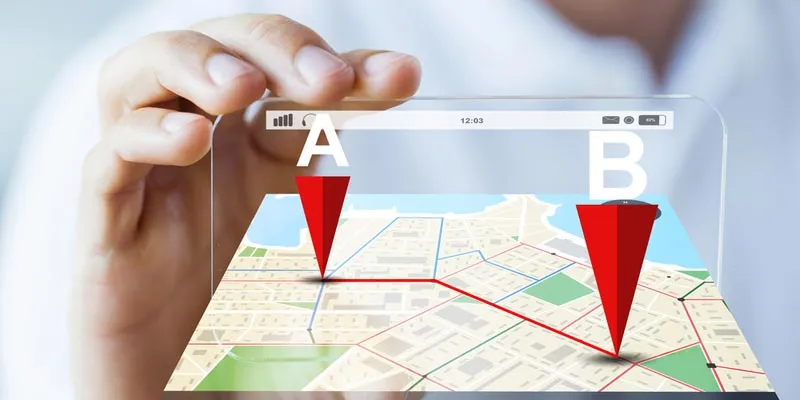Tracking, the other side of navigation
Ever wondered how many people are out and about this moment, trying to get from one place to the other? How would you guesstimate the number of times they would go from one place to the other today? How many of these trips happen with a smartphone on their side? How many trips involve people waiting or trying to figure out how far it has reached?

I estimate that billions of trips happen on the planet every day by people with smartphones. It has become second nature for humans worldwide to use maps apps to get from one place to another and navigate to the destination. There was a time when I wondered if technologically-challenged consumers would ever use an app to navigate rather than rolling down the window to ask someone for directions. Let’s just say the usage of maps on smartphones is higher than anyone would have anticipated a decade ago.
While maps and navigation has been solved for a large part of the world, the other side of navigation remains unsolved. Do you still find yourself asking the question where your friend has reached, or for that matter your colleague, or your 3-pm meeting? Do you find yourself checking on your pizza that was dispatched 15 minutes ago, your plumber who promised to be there by 11am, or your package that has been out for delivery since morning? You get the idea. If you can track your Uber coming to you turn-by-turn with an accurate ETA, why can’t you track everything else in your life? If navigation is a non-issue, why is tracking still an issue? How hard can it be, right?
Well, at HyperTrack, we are hoping to find out just that. A bunch of us are on a mission to ensure that businesses, their customers and consumers worldwide can track the people and things in their lives as easily as the tapping of a button.
We find ourselves at the intersection of three trends that only seem to be headed in one direction:
Enterprise workflows are moving to smartphone apps
The mobile workforce is migrating from phone calls, printouts and custom hardware devices to smartphone apps. Phone calls build a culture of ad-hocism and human supervision. Printouts take away efficiency and agility. Custom devices make it slower to roll out features, and get expensive to operate. Smartphones make it easy to roll out, to train the workforce on, to scale up or down, to develop software on, to roll out features overnight, to stay connected and to track.
Enterprises are hiring in-house developers
More businesses of all vintages, shapes and sizes now have in-house developers. The owner of a large non-tech enterprise told me earlier this week that there are two types of businesses in the world: those with in-house developers and those planning to hire in-house developers. The founders of a contemporary casual dining restaurant chain prefer the title of a CTO over a CIO for the person who builds and buys their technology. If Marc Andreessen is to be believed, “software is eating the world”. Enterprises are responding by building in-house expertise before their world is eaten.
Small teams are buying enterprise software over the Internet
Not too long ago, enterprise software was either proprietary software with large contracts for on-premise licences or free open-source software that the enterprising developer could tame. Over the last decade, both seem to have converged into cloud-based software-as-a-service. Thanks to Amazon Web Services and Google Applications, small autonomous teams are swiping their cards on websites to buy cloud software with pay-as-you-go plans. Millions of developers within enterprises use a variety of developer tools in the cloud to build, manage, deploy, operate, test, measure and monitor software.
Considering these trends, the most efficient way to achieve the track-everything-in-your-lives mission is to, first, build a simple technology that just works and, second, distribute it to developers worldwide as a web service. A lightweight location-tracking module gets embedded within the enterprise workforce app and beams smart and efficient location streams to the cloud.
HyperTrack started testing this hypothesis through a private Beta over the last three months. We learnt that the reason we cannot track everything in our lives is that current technologies are not easy and powerful enough to solve the problem. Based on the number of access requests received during the private Beta and the market spaces they represent, my estimate is that hundreds of thousands (if not millions) of businesses worldwide are interested in implementing tracking for their business. The combination of available technology primitives for tracking and priorities of the technology team have made it hard for in-house efforts to see light of day for business teams and their customers.
On June 28, HyperTrack Beta will be made available in a fully self-service manner along with documentation, SDKs and API keys. The source code for our driver SDKs and end-customer SDKs are available upon request, and in time will be available through open source. We look forward to learning from your usage and feedback.
(Disclaimer: The views and opinions expressed in this article are those of the author and do not necessarily reflect the views of YourStory)







